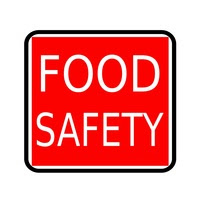

 FDA issues warning about body-building products labeled to contain steroid and steroid-like substances The FDA posted warning letters to Flex Fitness/Big Dan’s Fitness, AndroPharm, and Hardcore Formulations for illegally marketed products labeled to contain steroid and steroid-like substances and promoted to increase muscle mass and strength. Although the products that are the subject of these warning letters are marketed as dietary supplements, they are not dietary supplements. Instead, these products are unapproved drugs that FDA has not reviewed for safety and effectiveness. FDA recommends consumers The agency reviewed more than seven years of adverse event reports and found 35 patients who suffered liver injuries, many requiring hospitalization, that were associated with these types of products. More information |
 Alvogen Issues Voluntary Nationwide Recall of Clindamycin Injection Due to a Potential for a Lack of Sterility AssuranceAlvogen is voluntarily recalling seven lots of Clindamycin Injection USP ADD-Vantage Vials to the hospital/retail level due to microbial growth detected during a routine simulation of the manufacturing process, which represents the potential introduction of microorganisms into the product. Clindamycin Injection is manufactured for Alvogen by Hospira Inc., a Pfizer Company. Clindamycin Injection, USP is indicated in the treatment of serious infections caused by susceptible bacteria. Its use should be reserved for penicillin-allergic patients or other patients for whom, in the judgment of the physician, a penicillin is inappropriate. More information. Sonar Products ordered to cease operations, Stratus Pharmaceuticals ordered to cease distributing unapproved drugsThe U.S. District Judge Kathleen M. Williams for the Southern District of Florida entered a consent decree of permanent injunction between the United States and Stratus Pharmaceuticals Inc. of Miami, Florida, Sonar Products Inc. of Carlstadt, New Jersey and two of the companies’ officers, Alberto Hoyo and Juan Carlos Billoch. According to the complaint filed with the consent decree, Stratus and Sonar routinely shipped unapproved, improperly labeled (misbranded), and substandard or contaminated (adulterated) drugs in interstate commerce. Specifically, Sonar manufactured and Stratus distributed a number of dermatological products, including various washes, creams and ointments that were not approved by the FDA, in violation of the Federal Food, Drug, and Cosmetic Act. More information FDA requests removal of Opana ER for risks related to abuse The FDA requested that Endo Pharmaceuticals remove its opioid pain medication, reformulated Opana ER (oxymorphone hydrochloride), from the market. After careful consideration, the agency is seeking removal based on its concern that the benefits of the drug may no longer outweigh its risks. This is the first time the agency has taken steps to remove a currently marketed opioid pain medication from sale due to the public health consequences of abuse. The FDA’s decision is based on a review of all available postmarketing data, which demonstrated a significant shift in the route of abuse of Opana ER from nasal to injection following the product’s reformulation. Injection abuse of reformulated Opana ER has been associated with a serious outbreak of HIV and hepatitis C, as well as cases of a serious blood disorder (thrombotic microangiopathy). This decision follows a March 2017 FDA advisory committee meeting where a group of independent experts voted 18-8 that the benefits of reformulated Opana ER no longer outweigh its risks. More information |
Comunicaciones de la FDA sobre la seguridad de los medicamentos en español Descargo de responsabilidad: La FDA reconoce la necesidad de proporcionar información importante sobre seguridad de los medicamentos en idiomas distintos al inglés. Hacemos lo mejor posible para proporcionar versiones en español precisas y oportunas de nuestras Comunicaciones de Seguridad de Medicamentos. Sin embargo, en caso que existiera discrepancias entre las versiones en inglés y la de español, la información contenida en la versión en inglés es la que se considera como versión oficial. Si tiene alguna pregunta, por favor contáctese con Division of Drug Information en druginfo@fda.hhs.gov. Comunicaciones de la FDA |

 FDA knows the major public health consequences that can result from drug shortages. These shortages occur for many reasons including manufacturing and quality problems, delays and discontinuations. When issues are discovered, FDA works closely with the company to address risks involved to prevent harm to patients. FDA also considers the impact a shortage would have on patient care and access and works with the company to restore supplies while also ensuring safety for patients. More information |
Drug Shortages Reported to be Resolved by Manufacturers During the Past 2 Weeks:
Drug Discontinuation Voluntarily Reported by Manufacturers During the Past 2 Weeks:
Information about blood and biologic shortages, resolved shortages, and discontinuations La FDA reconoce las consecuencias significativas para la salud pública que pueden resultar de la escasez de medicamentos y hace un gran esfuerzo dentro de sus facultades legales para abordar yprevenir la escasez de medicamentos. La escasez se produce por muchas razones, incluyendo problemas de fabricación y calidad, retrasos y discontinuación del producto. Cuando los problemas son descubiertos por la empresa o el público y reportados a la FDA o se descubren por inspecciones de la FDA, la FDA trabaja en estrecha colaboración con la empresa para hacer frente a los riesgosinvolucrados y evitar daños a los pacientes. La FDA también considera el impacto que una escaseztendría en la atención médica del paciente y al acceso del producto y trabaja con la empresa pararestablecer el suministro al tiempo que garantiza la seguridad de los pacientes. Más información |
For information on drug approvals or to view prescribing information and patient information, please visit Drugs@FDA or DailyMed.
 FDA approves new epinephrine injection for emergency treatment of allergic reactions The FDA approved Symjepi (epinephrine injection) 0.3 mg pre-filled syringe for the emergency treatment of allergic reactions, including anaphylaxis. The product delivers 0.3 mg of epinephrine and is intended for patients who weigh 30 kg (approximately 66 pounds) or more. This is a new drug alternative to EpiPen. It is not an alternative for EpiPen Jr, which is indicated for patients who weigh between 15 and 30 Kg (approximately 33 and 66 pounds). Symjepi is intended for immediate administration as emergency supportive therapy and is not intended as a substitute for immediate medical care. In conjunction with the administration of epinephrine, the patient should seek immediate medical care. More than two sequential doses of epinephrine should only be administered under direct medical supervision. More information FDA approves new fluoroquinolone antibiotic to treat bacterial skin infections The FDA approved Baxdela (delafloxacin), a new antibacterial drug to treat acute bacterial skin and skin structure infections. Baxdela is available for intravenous and oral use. Acute bacterial skin and skin structure infections, such as cellulitis or wound infections, are commonly caused by the bacteria Streptococcus pyogenes and Staphylococcus aureus. Less common causes include other Streptococcus species, and Gram-negative bacteria. “Baxdela provides another option for the treatment of patients with serious skin and skin structure infections,” said Edward Cox, M.D., M.P.H, director of the Office of Antimicrobial Products in the FDA’s Center for Drug Evaluation and Research. More information FDA approved aminolevulinic acid hydrochloride, known as ALA HCl (Gleolan, NX Development Corp.) as an optical imaging agent indicated in patients with gliomas The FDA approved aminolevulinic acid hydrochloride, known as ALA HCl (Gleolan, NX Development Corp.) as an optical imaging agent indicated in patients with gliomas (suspected World Health Organization Grades III or IV on preoperative imaging) as an adjunct for the visualization of malignant tissue during surgery. More information |
 View FDA's Comments on Current Draft Guidance page, for a list of current draft guidances and other topics of interest for patients and caregivers. |
 Fostering Medical Innovation: A Plan for Digital Health Devices By: Scott Gottlieb, M.D., Commissioner of the FDAIt is incumbent upon FDA to ensure that we have the right policies in place to promote and encourage safe and effective innovation that can benefit consumers, and adopt regulatory approaches to enable the efficient development of these technologies. By taking an efficient, risk-based approach to our regulation, FDA can promote health through the creation of more new and beneficial medical technologies. We can also help reduce the development costs for these innovations by making sure that our own policies and tools are modern and efficient, giving entrepreneurs more opportunities to develop products that can benefit people’s lives. To this end, FDA will soon be putting forward a broad initiative that is focused on fostering new innovation across our medical product centers. I will have more to say on many elements of this initiative soon. However, today I want to focus on one critical aspect of this innovation initiative: A new Digital Health Innovation Plan that is focused on fostering innovation at the intersection of medicine and digital health technology. This plan will include a novel, post-market approach to how we intend to regulate these digital medical devices. To read the rest of this post, see FDA Voice Blog on June 15, 2017 |
 In this section you will find a comprehensive list of all the meetings that the FDA is involved with. The meetings may include advisory committee meetings, public workshops and public conferences that are seeking to hear from patients and caregivers. Most FDA meetings are free to the public and do not require the public to register. Interested persons may present data, information, or views, orally at the meeting, or in writing, on issues pending before the committee. Other types of meetings listed may require prior registration and fees. FDA Announces Public Meeting and Request for Comments Administering the Hatch-Waxman Amendments: Ensuring an Appropriate Balance Between Innovation and Access FDA will hold a public meeting, The Hatch-Waxman Amendments: Ensuring a Balance Between Innovation and Access, on July 18, 2017 and provide the public an opportunity to submit comments concerning administration of the Hatch-Waxman Amendments to the Federal Food, Drug, and Cosmetic Act to help ensure the intended balance between encouraging innovation in drug development and accelerating the availability to the public of lower cost alternatives to innovator drugs is maintained. To provide public comments, please click here https://www.regulations.gov/ The deadline for submitting comments regarding this meeting is September 18, 2017. Public Meeting Date: Tuesday, July 18, 2017 from 9 a.m. to 5 p.m. Location: FDA White Oak Campus 10903 New Hampshire Ave. Bldg. 31 Conference Center, the Great Room (Rm. 1503) Silver Spring, MD 20993 Registration:To register for the public meeting or request to make oral presentations: Send registration information (including name, title, firm name, address, telephone, email address, and fax number), and written material to Philip Bonforte, Center for Drug Evaluation and Research, FDA at GenericDrugPolicy@fda.hhs.gov by July 3, 2017. More information:
|
View FDA's Patient Network Calendar of Public Meetings page for a complete list of meetings and workshops.
For additional information on other agency meetings please visit Meetings, Conferences, & Workshops. |
 Caution: Bodybuilding Products Can Be Risky Your buddy at the gym can’t say enough about the bodybuilding products he’s been taking to help build muscle mass and strength. You wonder, are they all safe to use? According to CDR Mark S. Miller, Pharm. D., a regulatory review officer at FDA, bodybuilding products that contain steroids or steroid-like substances are associated with potentially serious health risks, including liver injury. “Some of the liver injuries were life-threatening,” CDR Miller says. CDR Miller was the lead reviewer assessing hundreds of adverse event reports made to the FDA from July 2009 through December 2016. Thirty-five reports showed evidence of serious liver injury. In addition to liver injury, anabolic steroids have been associated with serious reactions such as severe acne, hair loss, altered mood, irritability, increased aggression, and depression. They have also been associated with life-threatening reactions such as kidney damage, heart attack, stroke, pulmonary embolism (blood clots in the lungs), and deep vein thrombosis (blood clots that occur in veins deep in the body). More information |
 Eating Outdoors, Handling Food Safely Picnic and barbecue season offers lots of opportunities for outdoor fun with family and friends. But these warm weather events also present opportunities for foodborne bacteria to thrive. As food heats up in summer temperatures, bacteria multiply rapidly. To protect yourself, your family, and friends from foodborne illness during warm-weather months, safe food handling when eating outdoors is critical. Read on for simple food safety guidelines for transporting your food to the picnic site, and preparing and serving it safely once you’ve arrived. Pack and transport food Safely Keep your food safe: from the refrigerator/freezer — all the way to the picnic table.More information |
More Consumer Updates
For previously published Consumer Update articles that are timely and easy-to-read and cover all FDA activities and regulated products. More information
For previously published Consumer Update articles that are timely and easy-to-read and cover all FDA activities and regulated products. More information
En Español
La información en esta página es para el público en general, y para profesionales y educadores de salud. Esta información puede ser distribuida y publicada sin previa autorización. En Español
La información en esta página es para el público en general, y para profesionales y educadores de salud. Esta información puede ser distribuida y publicada sin previa autorización. En Español
 The Safety Reporting Portal The Safety Reporting Portal (SRP) streamlines the process of reporting product issues to the Food and Drug Administration and the National Institutes of Health. Whatever your role, (manufacturer, health care professional, researcher, public health official, or concerned citizen), when you submit a safety report through this Portal, you make a vital contribution to the safety of America's food supply, medicines, and other products that touch us all. More information Center for Food Safety and Applied Nutrition The Center for Food Safety and Applied Nutrition, known as CFSAN, carries out the mission of FDA. The Center provides services to consumers, domestic and foreign industry and other outside groups regarding field programs; agency administrative tasks; scientific analysis and support; and policy, planning and handling of critical issues related to food and cosmetics. More information Food Facts for You The Center for Food Safety and Applied Nutrition, known as CFSAN, issues food facts for consumers to keep you and your family safe. More information |
 Animal Health LiteracyAnimal Health Literacy means timely information for the benefit of all animals and their humans. With continuous communication and outreach, the Center for Veterinary Medicine (CVM) strives to enhance the public trust, promote safe and effective use of the animal health products we regulate, and share our scientific endeavors. CVM provides reliable, science-based information to promote animal and human health. More information and Publicaciones en Español del FDA Animal and Veterinary UpdatesAnimal and veterinary updates provide information to keep your pets healthy and safe. More information |
 How to Report a Pet Food Complaint You can report complaints about a pet food product electronically through the Safety Reporting Portal or you can call your state’s FDA Consumer Complaint Coordinators. Please provide as much information as possible in your complaint, such as exact name of product, type of container, lot number, UPC codes, how the food was stored, and purchase date and exact location where purchased. If possible, please save the original packaging until the pet food has been consumed. The packaging contains IMPORTANT information often needed to identify the variety of pet food, the manufacturing plant, and the production date. More information |
 | Missed the last issue of CTPConnect?The Center also publishes a regular periodical known as CTPConnect, a plainspoken digest with the latest stories from the Center. Sign up today to receive the next issue of CTPConnect and other important updates from CTP directly to your inbox. |
 Tips to help avoid "vape" battery explosions You may have heard that e-cigarettes, or "vapes," can explode and seriously injure people. To help reduce the risk of vape battery overheating, fires, and explosions, the FDA has developed an infographic with five key tips, a video on how to report adverse events to the FDA’s Safety Reporting Portal, and shareable and downloadable content to help spread the word about vape battery safety. |
From plant to product to puff—where do toxic chemicals in cigarettes come from?With more than 7,000 chemicals in cigarette smoke—over 70 of which are linked to cancer—it comes as no surprise that cigarettes contain harmful chemicals that cause death and disease. But where do these toxic chemicals come from? And why are there so many? Watch the FDA’s video series about chemicals in cigarettes to find out, and test your knowledge with our short quiz online.
How cigarettes are made and how you can make a plan to quit
Ever wonder why it’s so hard to kick smoking to the curb? Well, we’ve got an answer! CTP created an infographic that explores how cigarettes are made, highlighting how their very design may be an obstacle to quitting. As people across the country pledge to quit smoking, consider sharing this infographic with someone who could benefit.
How cigarettes are made and how you can make a plan to quit
Ever wonder why it’s so hard to kick smoking to the curb? Well, we’ve got an answer! CTP created an infographic that explores how cigarettes are made, highlighting how their very design may be an obstacle to quitting. As people across the country pledge to quit smoking, consider sharing this infographic with someone who could benefit.
FDA’s LGBT Public Education Campaign Makes Headlines
FDA’s “This Free Life” Campaign was recently recognized at the annual Association of National Advertisers (ANA) Multicultural Marketing & Diversity Conference. Winning the Multicultural Award of Excellence in the LGBT category, FDA made its mark among other category winners such as Coca-Cola, Toyota, and McDonalds. Watch the Ad and learn more about FDA’s “This Free Life” campaign!
FDA’s “This Free Life” Campaign was recently recognized at the annual Association of National Advertisers (ANA) Multicultural Marketing & Diversity Conference. Winning the Multicultural Award of Excellence in the LGBT category, FDA made its mark among other category winners such as Coca-Cola, Toyota, and McDonalds. Watch the Ad and learn more about FDA’s “This Free Life” campaign!
 Share the image and support those who matter to you most! Do you know someone who could benefit from CTP’s messages about tobacco? Sharing information about the health effects of tobacco has never been so easy. Simply save either image in this section and post it to your social media account, such as Facebook or Twitter. |
 Bad reaction to a cosmetic? FDA needs to know What do you do if you have a reaction after using a cosmetic product? First, stop using the product and contact your healthcare provider. Next, please report it to FDA. Here’s why that next step is so important: Cosmetic products aren’t required by law to have FDA approval before they go on the market. Companies that market cosmetics have a legal responsibility to ensure product safety, but FDA can only take action if the product is shown to be unsafe after the product is on the market. And, because the law doesn’t require cosmetic companies to share customer complaints or other safety information with FDA, voluntary reports from consumers and healthcare providers are one of the best ways for FDA to learn about any problems. Cosmetics include a range of products people use every day, such as moisturizers, makeup, shampoos and conditioners, face and body washes, deodorants, nail care products, hair dyes and relaxers, and tattoos. More information |
Recalls and Alerts
To see safety alerts and recent recalls related to cosmetics and other products regulated by FDA. More information
To see safety alerts and recent recalls related to cosmetics and other products regulated by FDA. More information
What to watch for, how to report
You can report an allergic reaction, a rash, redness, burn, hair loss, headache, infection, illness, or any other unexpected reaction, whether or not it required medical treatment. You can also report a bad smell, color change, or other sign of contamination. You can choose the way you’d prefer to report:
You can report an allergic reaction, a rash, redness, burn, hair loss, headache, infection, illness, or any other unexpected reaction, whether or not it required medical treatment. You can also report a bad smell, color change, or other sign of contamination. You can choose the way you’d prefer to report:
- Call an FDA Consumer Complaint Coordinator if you want to speak directly to a person about your problem.
- Complete an electronic Voluntary MedWatch form online.
- Complete a paper Voluntary MedWatch form that you can mail to FDA.
 Information about Expanded Access Expanded access, sometimes called "compassionate use," is the use outside of a clinical trial of an investigational medical product (i.e., one that has not been approved by FDA). FDA is committed to increasing awareness of and knowledge about its expanded access programs and the procedures for obtaining access to human investigational drugs (including biologics) and medical devices. More information |
Learn about what your physician should do before submitting a request for individual patient expanded access use of an investigational medical product, who may be eligible for expanded access, associated costs, FDA contacts and more. Information for Patients |
Learn about your responsibilities under the expanded access pathway, how to submit a request for expanded access for an individual patient (including for emergency use), which forms to use, FDA contacts and more. Information for Physicians |
 FDA Patient Network The FDA Patient Network contains a series of webpages, webinars and presentations on topics related to patient engagement, FDA regulations, understanding medical product (Drugs, Biologics, and Devices) approval and medical product safety updates, Take me to the FDA Patient Network , Follow us on twitter or take me to FDA Webinars. FDA Basics Each month, different centers and offices at FDA will host an online session where the public can ask questions to senior FDA officials about a specific topic or just listen in to learn more about FDA. More information |
 healthfinder.gov Welcome to healthfinder.gov, a government Web site where you will find information and tools to help you and those you care about stay healthy. More information /más información |






















.png)











No hay comentarios:
Publicar un comentario